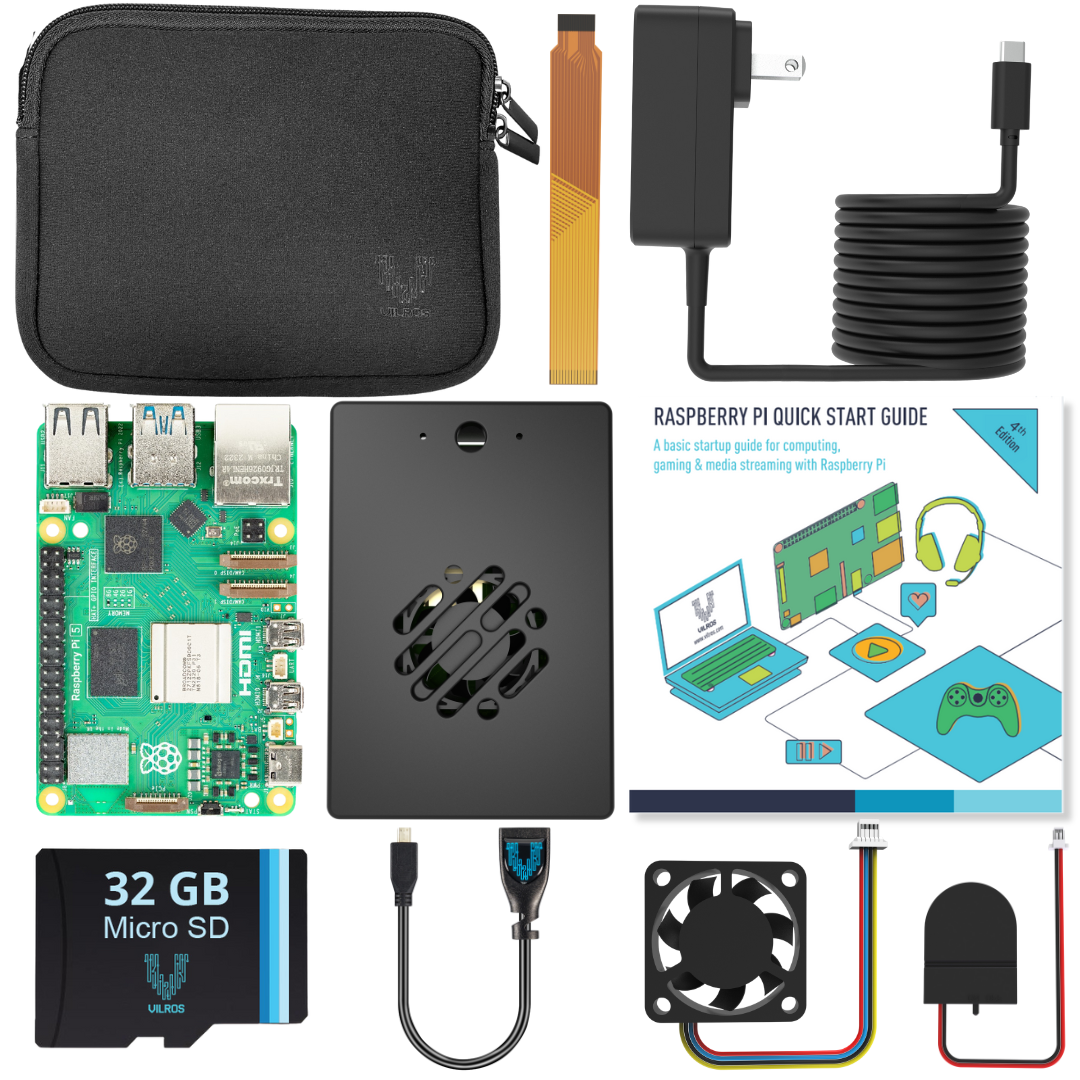
Introducing the First Raspberry Pi Microcontroller: The Raspberry Pi Pico
Introducing the First Raspberry Pi Microcontroller: The Raspberry Pi Pico
On January 21, 2021, Raspberry Pi launched Pico, its first microcontroller product. Significantly, Pico is built on RP2040, Raspberry Pi’s brand-new proprietary silicon chip. With this new technology, you’ll now be able to create a variety of programs for all sorts of commercial, industrial, and fun projects – even those requiring powerful computing in a small package with low power needs.
Best of all, Raspberry Pi Pico is available from approved resellers such as Vilros for just $4!
Microcontroller Challenges & Benefits
A microcontroller is a tiny device that’s used to control other components of a complex electronic system. Using just a processor, small amounts of memory, and a set of peripherals, a microcontroller is what’s used in devices like a television or an electronic toothbrush to carry out the instructions needed for the device’s specific operations.
Microcontrollers are especially useful because they require less power than other computing devices. For example, even on its lowest power setting, the Raspberry Pi Zero typically requires at least 100 milliwatts of power. Microcontrollers are also valuable because they can support analogue input. For this reason, many users previously paired a Raspberry Pi device with a microcontroller so that they could get the computing power and memory of a Pi with the microcontroller benefits.
For years, Raspberry Pi has been interested in developing its own microcontroller product, but first the company had to create its own silicon chip in order to create the kind of microcontroller worthy of the brand’s reputation. Thus, along with the launch of Pico, Raspberry Pi is simultaneously introducing the new RP2040.
Raspberry Pi’s New Proprietary Chip: RP2040 
In designing the RP2040, Raspberry Pi’s development team had three goals:
- High Performance
- Low Cost
- Flexible I/O (so that the chip could connect with a wide range of external devices)
In the end, they created a powerful chip, with impressive computing capability and storage on just two square millimeters of silicon. Here are just some of the most important features of RP2040:
- Dual-Core Arm Cortex-M0+ Processor
- 264KB Internal RAM (much higher than comparably small chips!)
- Support for 16MB Off-Chip Flash with Dedicated QSPI Bus
- 30 GPIO Pins (with 4 that can be used for analogue input)
- Flexible I/O Options (including I2C, SPI, and Programmable I/O [PIO])
- DMA Controller
- USB Mass Storage with UF2 Support (for drag-and-drop programming)
With its two super-fast core processors and large on-chip RAM memory, RP240 will be ideal for machine learning projects. Also, if you’re a beginner or someone interested in computing languages, Raspberry Pi has worked with the creators of MicroPython to offer additional capability, insight, and support into RP2040’s possibilities.
Get Started with Raspberry Pi Pico!
Raspberry Pi Pico combines RP2040 with 2MB of flash memory and the need for a power source of only two or three AA batteries or a single lithium battery – making it an easy low-cost entry for anyone to get started with microcontrollers.
If you’re ready to get started with Raspberry Pi Pico, you can access this complete guide for everything you need to know to get set up and the make the most of your new Pico.
Here at Vilros we even offer a Raspberry Pi Pico Basic Starter Kit that comes with a new Pico plus a pin header set, a USB cable, a battery holder with a micro-USB connector, and a perfectly sized storage case. Try it out and let us know what you think!
And don’t forget to check out more articles here on our Vilros blog for the latest news and updates from Raspberry Pi and Arduino.





